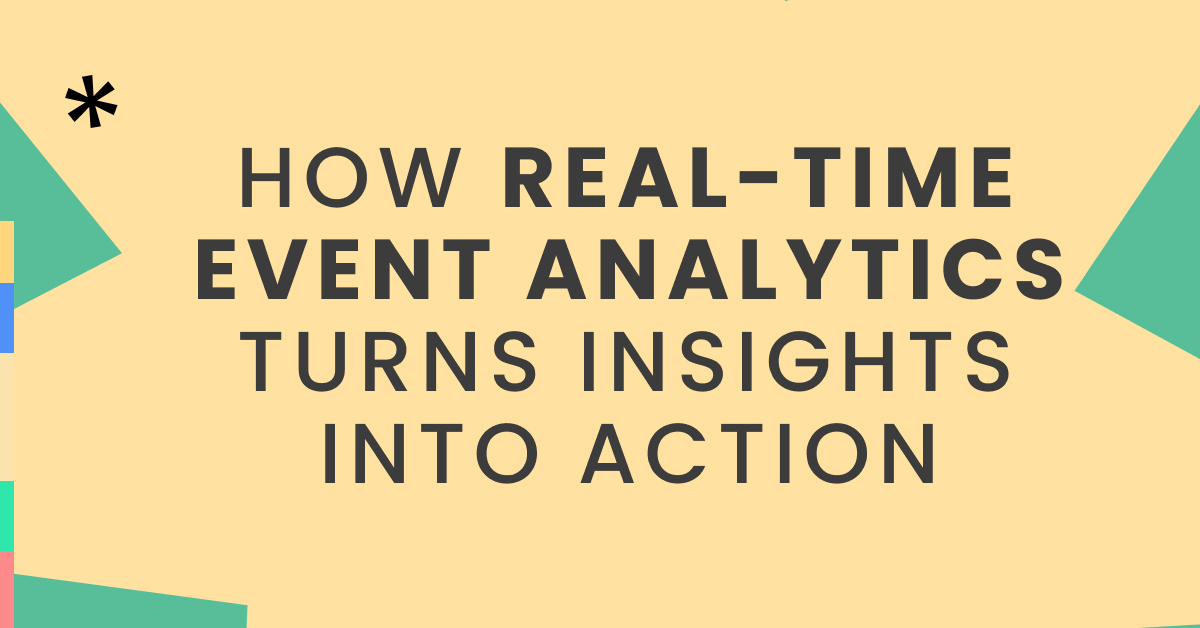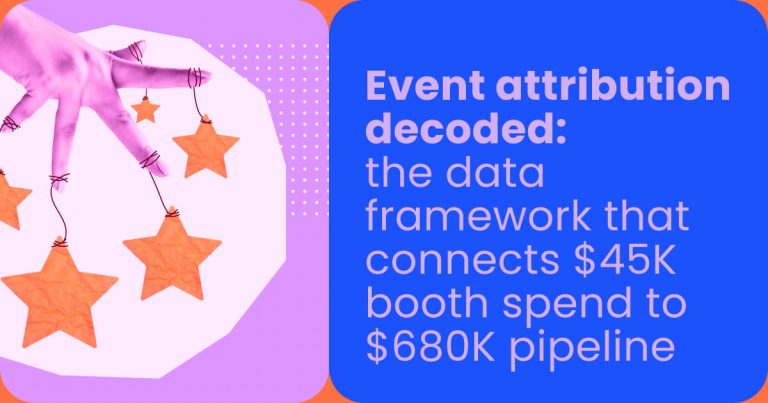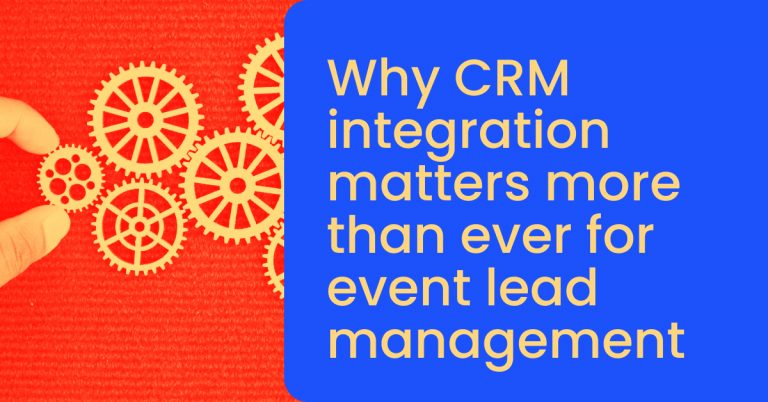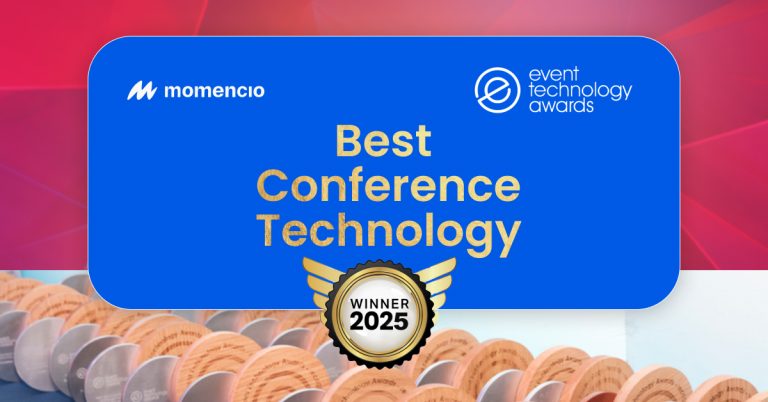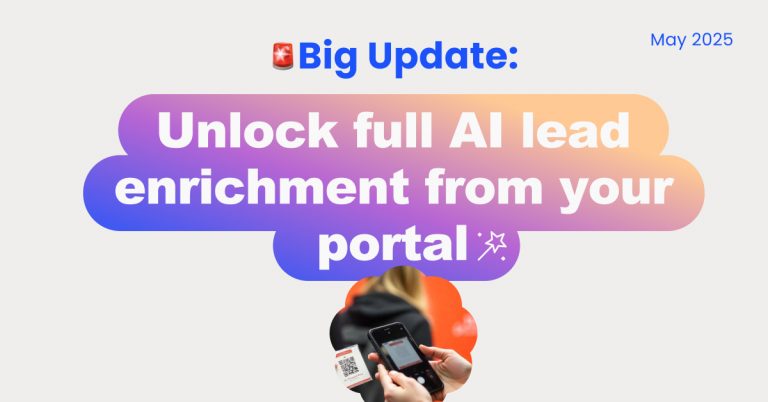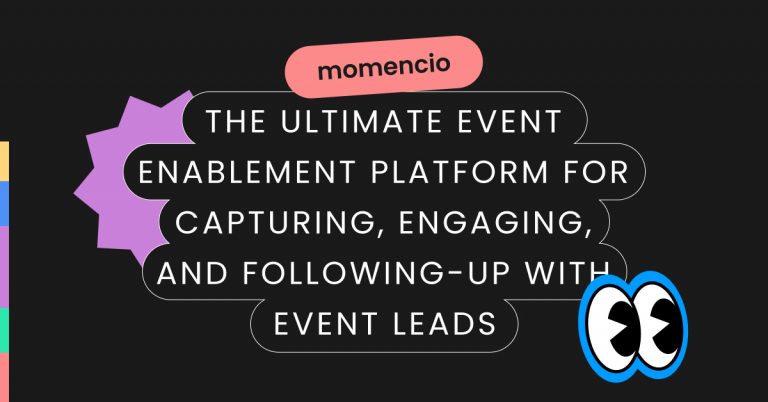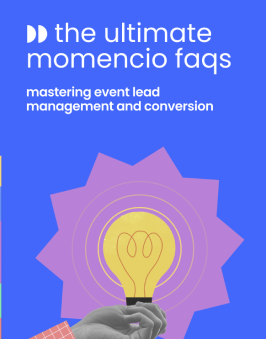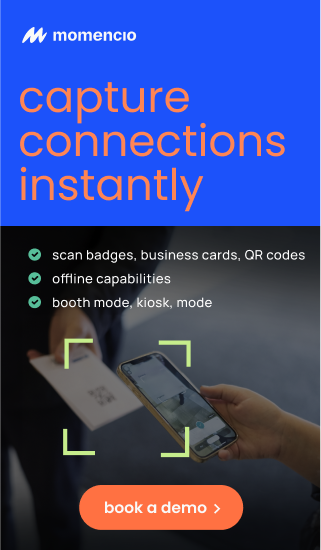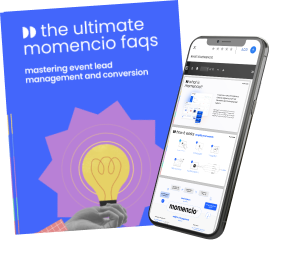Consider the last time you had to move swiftly at work. Perhaps you were debating whether to start a new marketing campaign or what pricing to charge for your goods before a significant holiday. Did you have time for real-time activity monitoring, or did you have to rely on your intuition?
You most likely need data-driven insights to make an educated conclusion. This is where real-time analytics enters the picture. Real-time event insights provide access to current data, allowing you to make rapid, informed decisions.
Let’s look at real-time event analytics, some instances of its utilization, the advantages of employing comprehensive event analytics, and how to effectively apply evidence-based decision-making.
What does real-time event analytics mean?
Real-time event analytics means getting live updates and insights about your event as it happens. It tracks things like attendee activity, booth traffic, session attendance, and engagement levels instantly.
This data helps you make quick decisions during the event, such as adjusting booth setups, promoting popular sessions, or improving engagement strategies. Instead of waiting for post-event reports, you can use real-time analytics to take action and make the event more successful while it’s still going on.
It’s a smart way to keep your event on track and deliver a better experience for attendees.
TL;DR: Real-time event insights allow organizers to make data-driven decisions on the spot, improving attendee engagement and overall event success. Use analytics to monitor lead interactions, adjust strategies, and boost engagement throughout the event.
How real-time event analytics can make or break an event
For exhibitors, every moment during an event is an opportunity to make a lasting impression. Real-time event analytics can be the difference between a booth buzzing with activity or one that attendees simply pass by. Here’s why—and how you can use this game-changing tool to your advantage.
1. Understand what is working
Real-time analytics provide instant feedback on booth traffic, attendee engagement, and session participation. Exhibitors can see which products, demos, or activities are drawing crowds and which aren’t.
What you can do:
- If your booth traffic is low, real-time insights can alert you to adjust your strategy immediately. Try promoting giveaways, running a quick contest, or leveraging social media to draw attendees in real-time.
2. Optimize resource allocation on the spot
Analytics can highlight bottlenecks like long wait times or underutilized team members at your booth. By identifying these pain points, you can reallocate resources to enhance efficiency.
What you can do:
- Use attendee flow data to station team members where they’re needed most or adjust demo schedules to keep the booth running smoothly.
3. Deliver personalized experiences
Real-time insights can show you attendee preferences, such as the sessions they’ve attended or the types of products they’re engaging with. This allows your team to tailor conversations to their interests.
What you can do:
- Equip your staff with live updates so they can greet attendees by name, reference their interests, and suggest relevant products or services. Personalized interactions can leave a lasting impression and boost lead quality.
4. Maximize engagement with timely adjustments
If a demo or activity isn’t getting the expected traction, real-time analytics can help you pivot instantly. Exhibitors can tweak messaging, swap out less popular materials, or change the demo’s focus based on what’s resonating with attendees.
What you can do:
- Set up notifications for key performance thresholds—such as low engagement for a product demo—and prepare alternative pitches or activities in advance.
5. Prove ROI immediately
One of the biggest challenges for exhibitors is demonstrating ROI to stakeholders. With real-time event analytics, you can showcase immediate results, like the number of leads captured, interactions logged, or assets downloaded.
What you can do:
- Use dashboards to create live updates for your team and stakeholders. Highlight key metrics such as booth visits, lead engagement, or top-performing assets to show measurable success as the event progresses.
Why it matters
Real-time event analytics isn’t just a nice-to-have—it’s a must-have for exhibitors looking to succeed in today’s competitive event landscape. It gives you the power to act, adapt, and improve while the event is still happening, ensuring you don’t miss out on potential leads or opportunities.
By leveraging real-time insights, exhibitors can maximize their impact, optimize their strategy, and walk away with results that impress stakeholders and drive future success.
Real-time event insights require three key components
The event industry is massive. According to Amazon Web Services, the event industry is expected to hit 1752.9 billion dollars in 2032. You can leverage it with these three components:
1. Data
This is the raw data that you’ll be studying. It may originate from various sources, such as financial trading, wearable devices, marketing campaign data, etc.
2. Analytics
This is the process of transforming data into knowledge. Machine learning, statistical modeling, data visualization, and natural language processing are all examples of analytics methodologies.
3. Action
Once you have obtained insights from your data, you must take action. This might be delivering a warning to a consumer, real-time replenishment of a product, or altering your marketing plan.
Importance of real-time event analytics
Understanding the real-time data and insights captured during an event is the first step in optimizing event ROI. These insights go beyond standard post-event reporting, allowing event planners and field marketers to take proactive measures during the event. Let’s look at the major factors that make real-time event insights so effective:
1. Immediate visibility
Real-time event data analytics provide instant access to attendee interactions, booth traffic, and levels of engagement. Event organizers can monitor which sessions attract the most interest, which booths attract the most visits, and how attendees engage with digital material.
2. Data-informed decisions
Event planners and field marketers may make data-driven choices on the go when equipped with real-time data. For example, if a certain booth or session is underperforming, changes may be made in real time to improve engagement and ROI.

3. Engagement with a personal touch
Attendee engagement may be tailored thanks to real-time analytics. Event planners may identify high-potential leads and adjust their interactions to increase conversion rates.
4. Resource distribution
Event Planners may effectively deploy resources by monitoring real-time information. If some sections of the event are doing better than others, resources might be reallocated to capitalize on those possibilities.
5. Adaptive marketing
Adaptive marketing tactics are enabled by real-time information. Event planners and field marketers may tweak their message and content depending on what resonates most with participants.
Staying ahead in the fast-paced event planning and marketing world requires real-time activity monitoring. This entails actively monitoring attendee interactions as they occur, offering data-driven insights into how well your event works.
The days of depending only on post-event analysis are long gone. Today, having full event analytics at your fingertips, along with performance measurement tools that enable you to make evidence-based choices in real time, is essential.
Key metrics for real-time event analytics
To successfully leverage the potential of real-time event analytics, event planners and field marketers should concentrate on important indicators that give significant information throughout the event. These are some of the metrics:
1. Real-time activity tracking
Keeping a steady check on real-time activity inside your event is critical. It enables you to detect trends, peaks, and problem areas quickly. Real-Time Activity Tracking gives a live pulse on the performance of your event, allowing for proactive decision-making.
2. Data-driven event analytics
Using data-driven insights throughout the event gives you actionable information. You can successfully satisfy the demands of attendees by evaluating their behavior, preferences, and interactions in real-time.
3. Comprehensive event analytics
Comprehensive event analytics include various metrics covering every area of your event. These metrics give a comprehensive perspective of your event’s success, from booth traffic to session attendance and lead scoring.
4. Performance metrics tools
Using performance analytics tools, you may track the success of your event in real time. These tools assist you in determining the efficacy of various areas of your event, such as engagement levels and resource allocation.
5. Evidence-based decision making
Real-time event insights give substantial data on which to make your judgments. Rather than depending on intuition or post-event analysis, you may make educated decisions during the event, improving the attendee experience and ROI.
These five essential criteria ensure that event planners and field marketers can make educated choices that promote event success. By actively monitoring these indicators in real-time, you will be better able to adapt, engage, and improve your event to accomplish your objectives and surpass guest expectations.

How to implement real-time event analytics successfully
Whether you are an experienced data professional or just starting, there is no better moment to transition from historical to real-time analytics. Follow these five tips if you want your company’s transformation to proceed successfully and swiftly.
1. Establish your goals and objectives
Before gathering data and constructing analytics infrastructure, you must identify your goals and objectives. What are your goals for real-time analytics? What precise insights do you seek? You will be better equipped to develop your system to fulfill your goals if you clearly know what you want to achieve.
2. Determine what information you need to acquire
When you know what objectives you want to accomplish, you can determine what data you need to gather to get there. This information might originate from several sources, such as financial trading data, marketing campaign data, gadgets, sensors, etc. You must consider structured and unstructured data when designing a real-time analytics system.
3. Create your data stack for real-time analytics
A contemporary data stack is required to gather and analyze data in real time. This contains the appropriate data sources, an ETL/ELT pipeline, a cloud data warehouse or data lake, and an experience layer. You can assure the reliability and scalability of your real-time analytics by investing in the correct data stack, such as momencio.
4. Gather and evaluate data.
You may begin gathering and analyzing data after your contemporary data stack is in place. This data may provide real-time insights to help you make better choices and respond faster.
5. Maintain and improve your real-time analytics.
It is critical to analyze and adjust your real-time event insights regularly. By doing so, you can guarantee that it is fulfilling your requirements and offering the insights you need to make better choices.
Also read: Effortless event ROI optimization with real-time insights
Conclusion
Real-time event analytics is a must-have for exhibitors and event planners who want to make data-driven decisions and deliver exceptional event experiences. By enabling instant insights into attendee behavior, booth traffic, and engagement levels, this technology empowers businesses to act proactively, optimize resource allocation, and prove ROI on the spot.
To implement real-time event analytics effectively, focus on clear goals, the right tools, and a commitment to continuous improvement. If you’re ready to transform your event strategy with real-time data, book a free 1:1 demo with our expert.
FAQs
- How does momencio provide real-time event analytics?
- Can momencio help exhibitors optimize their booth strategies during an event?
- Yes, momencio tracks real-time attendee interactions, helping exhibitors adjust booth layouts, demos, or engagement tactics for maximum impact on the spot.
- Does momencio support personalized attendee engagement?
- Absolutely! With momencio, you can access real-time attendee preferences and activity data, allowing your team to tailor interactions and improve lead quality.
- How does momencio ensure ROI is tracked in real-time?
- What tools does momencio offer for real-time data tracking?
- momencio provides features like live dashboards, activity tracking, and data visualizations, ensuring you have a complete view of your event’s performance as it happens.
